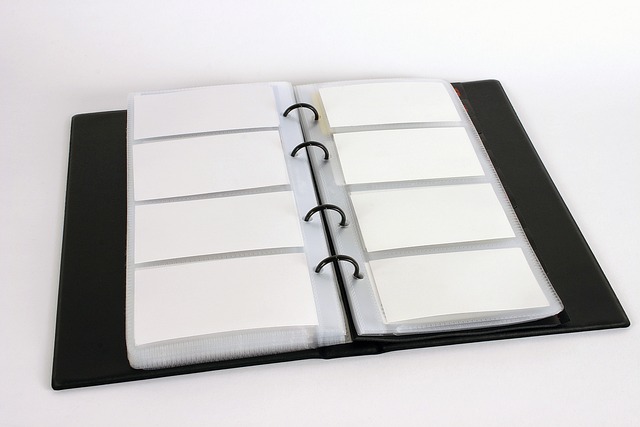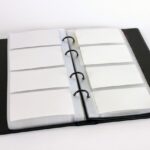If you are completely prepared by taking a Cisco CCNA Routing & Passing the CCNA Routing & Switching 200-125 certification test is challenging enough without taking a Switching programme with a teacher and without having access to all the required materials and tools. However, what happens after you return home? You will unlikely remember everything you were exposed to during a one-week boot camp. To fully comprehend all those ideas and embed them in your memory through practical application, you will need to set up a CCNA lab v3 at your residence or place of employment. We can assist you with this if you use our CCNA Lab Workbook v3.0 R&S 200-125!
Knowing that most of our customers cannot afford a large lab, our CCNA Lab Workbook 200-125 was created. Some folks can only afford two router labs at most. Others might have a bigger budget and be able to fit three Cisco switches and three Cisco routers in their lab. But regardless of the size of your lab, you must have a lab manual to assist you in your CCNA v3 study.
That is precisely why we came up with our general CCNA Lab Workbook. You will have access to more than 70 different CCNA labs. These experiments can be accomplished using one router for some of them, two routers for others, and three routers for others. Does this imply that if your CCNA lab only has two routers, you won’t benefit from using this lab booklet and won’t be able to complete all the labs? Not! You can still use it to aid in your laboratory experiments. You’ll see that several of the laboratories, like the EIGRP lab with three routers, may also be completed with just two routers. What stand to lose? Merely the additional flights the third router would have produced. So you can ignore that portion of the lab.
There are no other lab manuals like this one for the Cisco CCNA certification. You receive 60 thorough labs in addition to being given the theory behind each lab as we walk you through it and review questions and answers after each lab.
How many routers would I need for my CCNA Security 210-260 Lab?
Many pupils believe that outdated 2500, 2600, or IPSEC 12.4 series routers will work. Since the earlier 2600XM series supported SDM, it used to work properly. But as of right now, it is irrelevant because it does not support CCP. As mentioned earlier, other solutions besides the routers exist because CCP is a significant portion of the 640-554 exam.
The least expensive option is a router from the 1841 or 2800 series. These routers will support the 15.1 Advanced IP Services feature set, which enables zone-based firewalls and intrusion prevention systems. We suggest mixing up these routers to expose you to a range of routers that you might come across in the real world.
The CCNA Security 210-260 test was made specifically for the 1941 router with the Security Technology Package. In addition, this licence will support IPsec and other features like the Cisco IOS Firewall, SSL VPN, DMVPN, IPS, and GET VPN. One of our more expensive products, the 1941 Sec, is frequently out of most people’s price range.
How Effective Are Adaptive Security Appliances, Such as the ASA 5505?
The ASA-5505 will function just as well, even if the ASA-5510 is what the CCNA Security lab booklet calls for. However, the ASA 5510 is still your best option if you wish to proceed into more challenging concepts, even those not included in the CCNA Security curriculum. Additionally, we have gathered the information for you that has moved here if you need more details.
CCNA Security Lab Workbook Labs
- Researching Network Attacks and Security Audit Tools in Chapter 1 Lab A
- Securing the Router for Administrative Access in Chapter 2, Lab A
- Using AAA and RADIUS, Chapter 3 Lab A secures administrative access
- Configuring CBAC and Zone-Based Firewalls in Chapter 4 Lab A
- Configuring an Intrusion Prevention System (IPS) Using the CLI and CCP in Chapter 5 Lab A
- Security of Layer 2 Switches in Chapter 6 Lab A
- Lab A for Chapter 7: Investigating Encryption Techniques
- Configuring a Site-to-Site VPN Using Cisco IOS and CCP in Chapter 8 Lab A
- Setting Up a Remote Access VPN Server and Client in Chapter 8 Lab B
- Configuring a Remote Access VPN Server and Client in Chapter 8 Lab C
- Security Policy Creation and Application in Chapter 9 Lab A
- Configuring ASA Basic Settings and Firewall Using CLI in Chapter 10 Lab A
- Configuring ASA Basic Settings and Firewall Using ASDM in Chapter 10 Lab
- Configuring Clientless and AnyConnect Remote Access SSL VPNs Using ASDM in Chapter 10 Lab
- Configuring a Site-to-Site IPsec VPN Using CCP and ASDM in Chapter 10 Lab D
- ASA 5510 Supplemental Lab Manual Appendix
- Configuring ASA 5510 Basic Settings and Firewall Using CLI in Chapter 10 Lab E
- Chapter 10 Lab F: Setting Up the ASA 5510 Firewall and Basic Settings Using ASDM
- Configuring ASA 5510 Clientless and AnyConnect Remote Access SSL VPNs Using ASDM (Chapter 10 Lab G)
- Configuring a Site-to-Site IPsec VPN Using CCP on an ISR and ASDM on an ASA 5510 in Chapter 10 Lab H
The present and newSecurity CCNA 210-260 Lab Workbook v2.0 Labs
- Threats to contemporary network security, Chapter 1
- Social engineering in Lab A
- Studying network attacks and security auditing tools in Lab B
- Securing Network Devices in Chapter 2
- Lab A: Preventing Unauthorized Access to the Router
- Authentication, authorization, and accounting in Chapter 3
- Lab A: Using AAA and RADIUS to Secure Administrative Access
- Implementing Firewall Technologies in Chapter 4
- Configuring Zone-Based Policy Firewalls in Lab A (Lab 4.4.1.2)
- Chapter 5: Putting Intrusion Prevention into Practice
- Set up an intrusion prevention system in Lab A. (IPS)
- Securing the Local Area Network in Chapter 6
- Lab A: Layer 2 Switch Security
- Systems for cryptography in Chapter 7
- Lab A: Investigating Encryption Techniques
- Implementing Virtual Private Networks in Chapter 8
- Lab A: Set up a Site-to-Site VPN with the CLI
- Chapter 9 of the Cisco Adaptive Security Appliance Implementation Guide
- Lab A: Setup ASA Firewall and Basic Settings Using CLI
- Advanced Cisco Adaptive Security Appliance, Chapter 10
- Lab: Setup ASA Firewall and Basic Settings Using ASDM
- Lab B: Set Up a Site-to-Site IPsec VPN With the ASA ASDM and ISR CLI
- Lab C: Set Up Clientless SSL VPNs for Remote Access Using ASDM
- Lab D: ASDM Configuration for AnyConnect Remote Access SSL VPN
- Managing a Secure Network, Chapter 11
- CCNA Security Comprehensive Lab in Lab A
Well, learn this here now for additional details right away.


